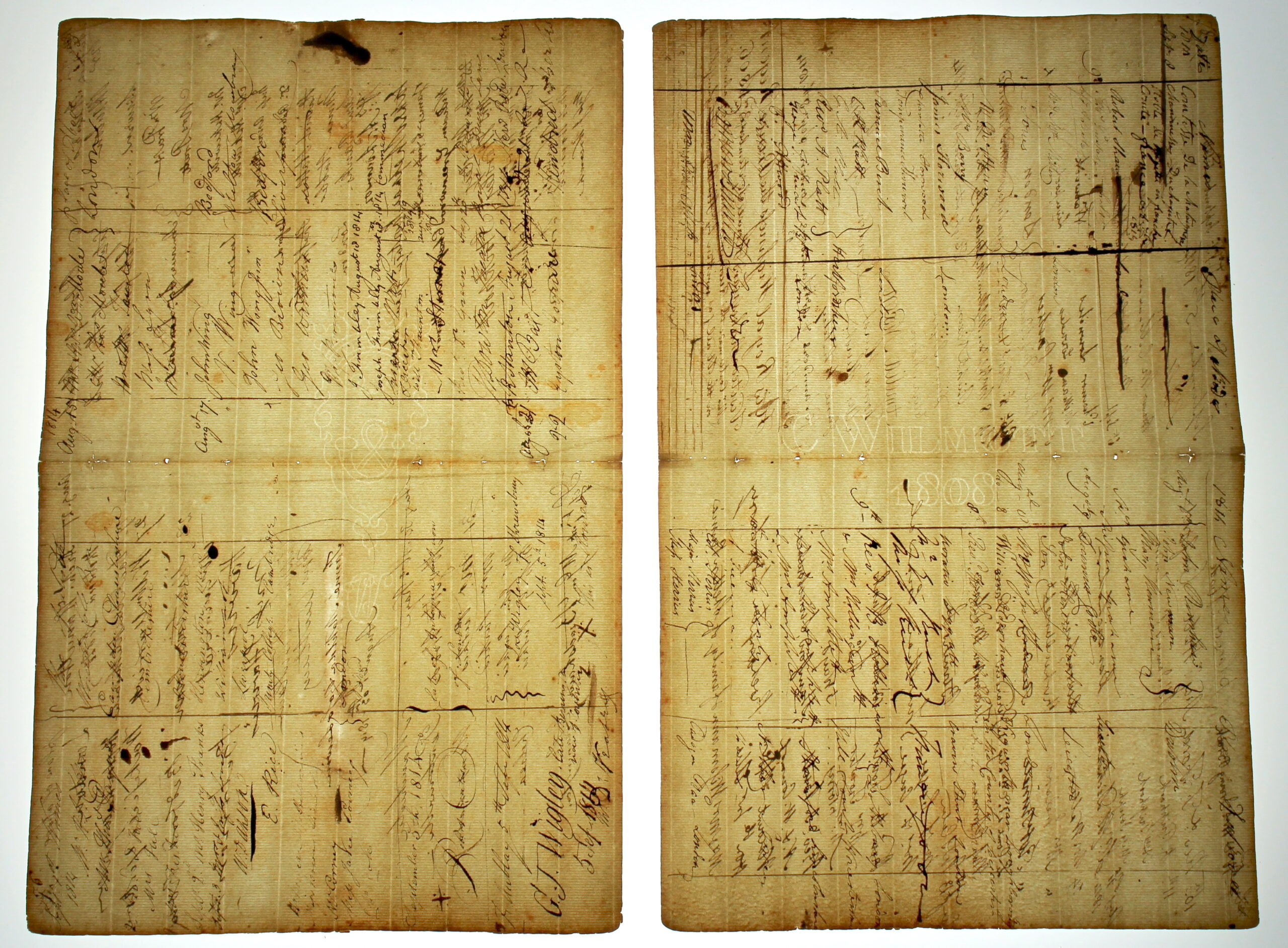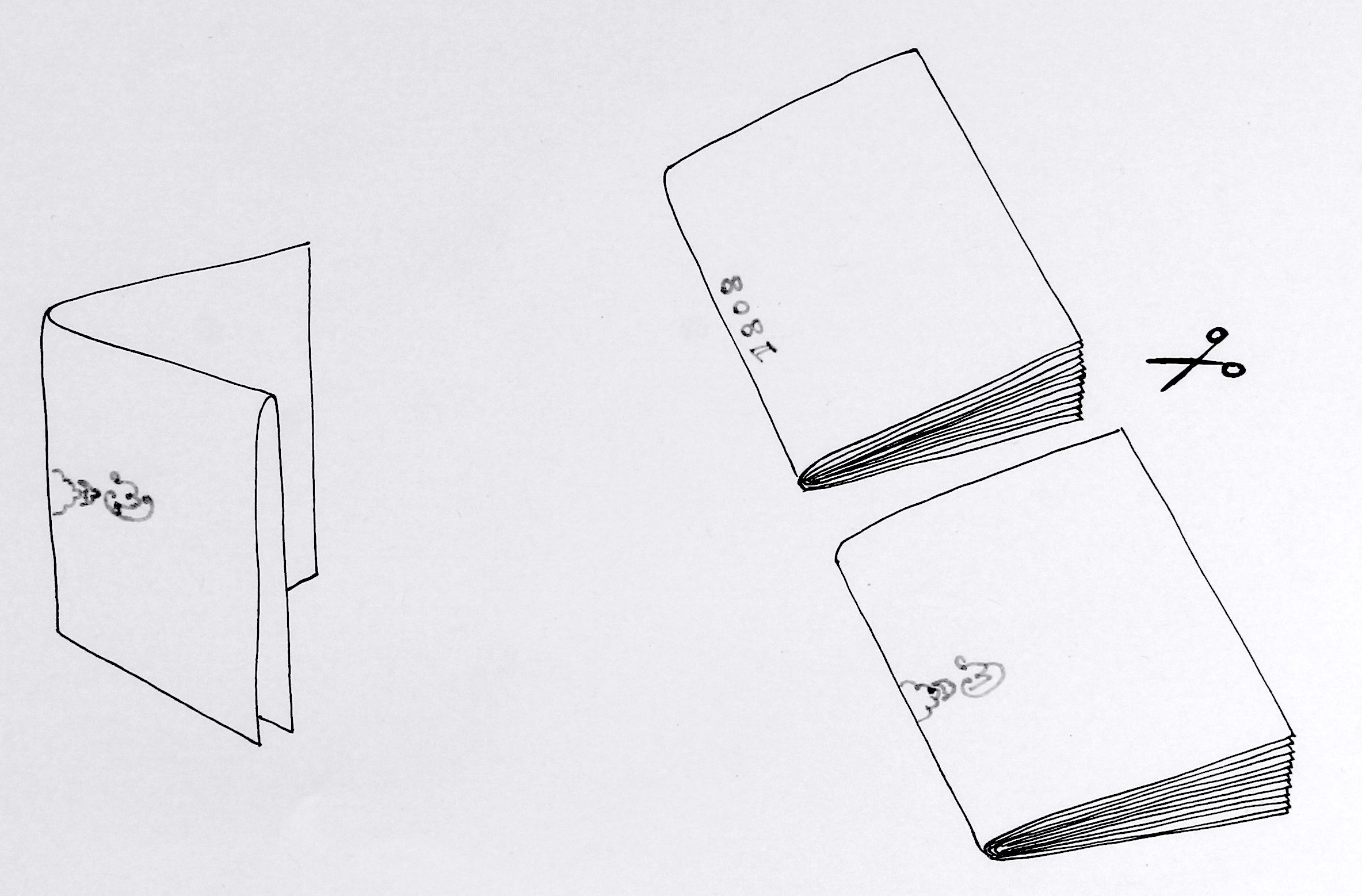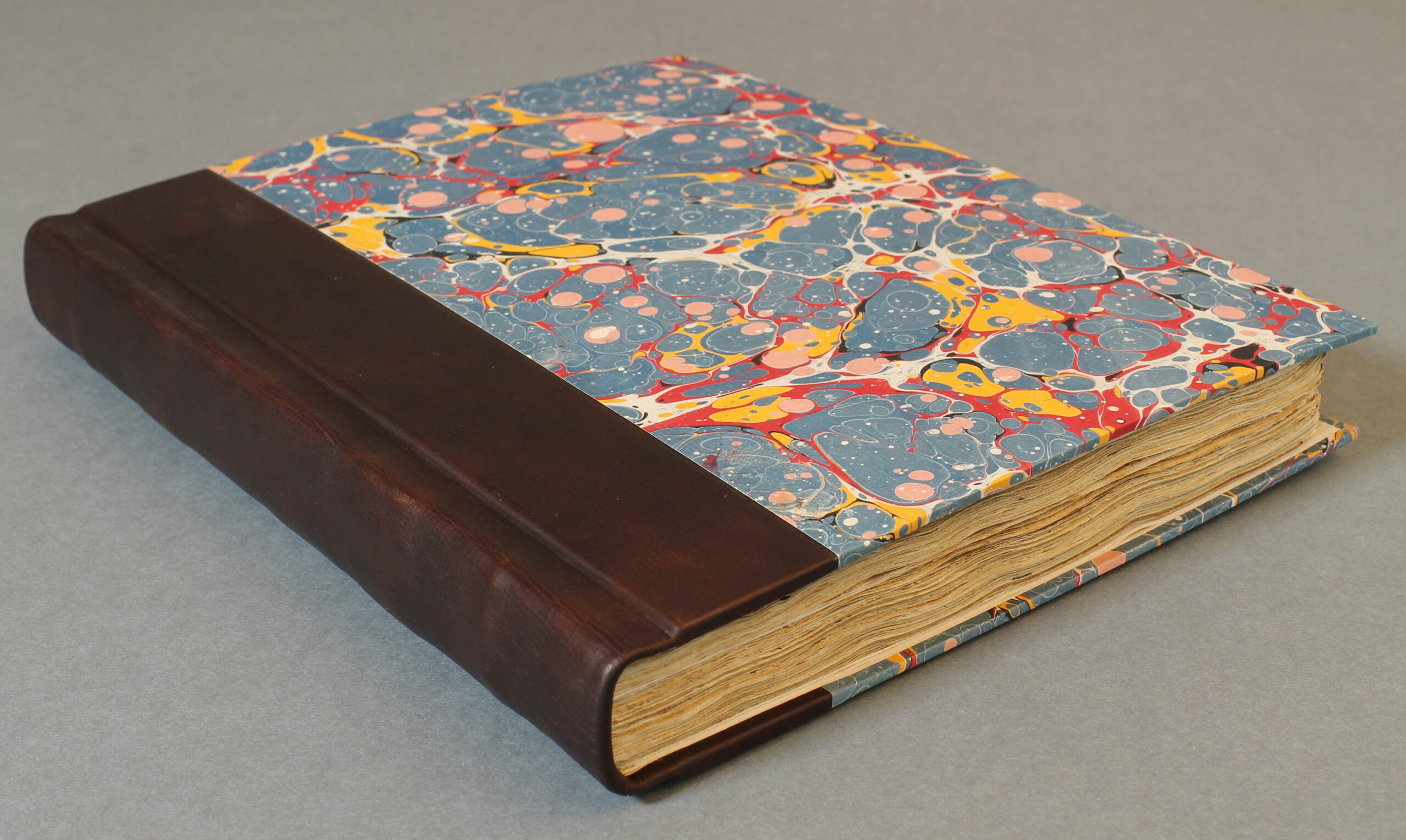The following is an amended excerpt from an unpublished Paper No hum-drum memorandum: Conservation of the Shakespeare Birthplace Trust’s first Visitor’s Book, that Arthur gave for the 2019 Archives & Records Association (ARA) Conference in Leeds.
The presentation described the conservation of an early 19th century stationery binding, looking at the various aspects of documentation, paper repairs, rebinding, provenance and treatment rationale etc.; however, it is the study of the watermarks in the paper and the implications that has for the way that stationery bindings were bound in the pre-industrial era that is the focus of this blog…
“The Shakespeare Birthplace Trust’s Visitor’s Book is a quarto memorandum book, a simple stationery binding; the kind of cheap blank book that was commonly made in the 18th and 19th centuries and sold locally. The text-block comprises 17 quarto quires of handmade paper, mostly in sixes.[1]
Because the book is a quarto, the watermarks and countermarks sit along the spine-fold. During conservation it was possible to unfold and reconstruct a full sheet and get a clear view of the watermarks on a lightbox (see below). The paper stock was made by Charles Wilmott in Kent and is unlikely to be earlier than the 1808 watermark.


Left: A quarto folded in the conventional way for a printed book, and Right: the method used to create the Visitors Book quires, with the sheets folded and then cut in half.
I would like to take a short moment to look at the format of the memorandum book, or the way that the sheets were folded, as the method used here appears to differ from the method used for printed books. In the drawing above, you can see the conventional way a quarto is folded with a single sheet folded in half twice. If more leaves were required for each quire, then multiple quires could be nested together. Either way, the result is always a regular distribution of watermarks and countermarks throughout each quire. However, the quires for the memorandum book were created differently: A pile of sheets of paper (most frequently six) were taken and folded together, parallel to the long edge. The stack was then cut in half to form two separate quires. The sheets appear to have been gathered with no concern for orientation; the result being that each quire of the book contains a random disposition of watermarks and countermarks, for example quire 4 in the memorandum book had only one watermark but five countermarks. This irregularity would be impossible if the sheets were folded the ‘standard’ way, so appears to indicate a difference between letterpress bookbinding and stationery bookbinding methods.”
This is just one example of this practice; however it suggests that stationery bookbinders working in the early 19th century made up quires differently to letterpress bookbinders. If a book is composed of blank leaves, then it follows that the binder is no longer beholden to the printed page, and is therefore free to construct quires in any way that is convenient. I am unsure how common this practice was, however it would seem logical that (as with almost every other process in the bookbinding trade) the lowly paid bookbinder would have always opted for the quickest and easiest option.[2] Furthermore, this small but significant difference in binding practice, also explains why stationery bindings sometimes have an irregular number of leaves per quire, as it is of little consequence if the number of leaves in each quire is inconsistent. Having now identified one example, I suspect that many others will make themselves known once other conservators (they are the people who get to study books when disassembled) start to look out for this feature.
This blog, including all images of the Visitor’s Book, is published with the kind permission of the Shakespeare Birthplace Trust.
Arthur Green, May 2022.
[1] The term ‘Quire’ is used here as the book is a manuscript; gathering or section are commonly used for printed paper books.
[2] Folding was a task undertaken by the ‘girls’ department, who were the lowest paid members of a bindery.


I’ve recently encountered an account book here in the U.S.from the 1830s with scaleboard covers (wooden , just 1 – 2 mm thick) that’s roughly 40cm tall. Experts on this side of the Atlantic say it’s the largest they’ve ever heard about. I’m curious about whether you’ve encountered any stationery bindings that were that large – and with scaleboard covers – on your side of the Atlantic.
Thanks for your comment. I’m yet to encounter scaleboard on an English binding; I’ve always understood it to be a uniquely American material. I’ve also always thought of it as a material used for smaller cheap books, so 40cm tall does sound unusual.